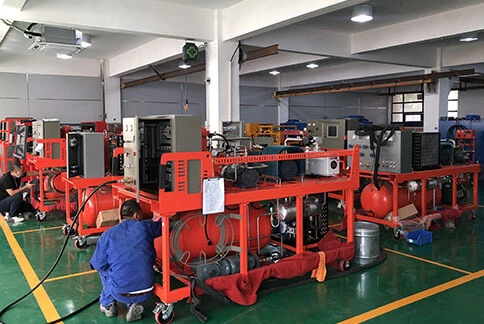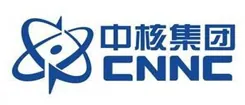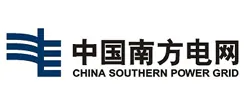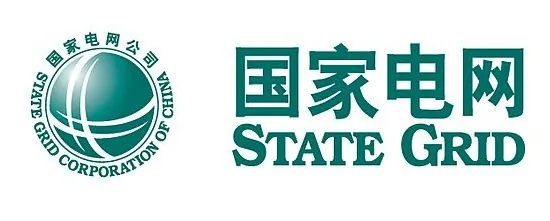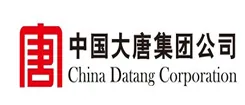International Consensus On SF6 Gas and Treatment Measures
2.1 International Consensus on Sf6 Gas
SF6 gas has the highest weight among various gases in the global greenhouse effect. How to reduce SF6 emissions is in use is essential.
The 1997 “Kyoto Protocol” has clarified that SF6 is one of the six greenhouse gases currently discovered.
The “Bali Road Map” also reiterated the role of the “Kyoto Protocol.”
At the same time, reducing greenhouse gas emissions and mitigating climate change are the main goals of “The United Nations Convention on Climate Change” and “Kyoto Protocol.”
| Gas | Global Warming Potential | Lifetime (years) |
|---|---|---|
| Carbon dioxide (CO2) | 1 | variable |
| Methane (CH4) | 21 | 12±3 |
| Nitrous oxide (N2O) | 310 | 120 |
| Hydrofluorocarbons (HFCs) | 140-11700 | 3.8-264 |
| Perfluorocarbons (PFCs) | 6500-9200 | 2600-50000 |
| Sulphur hexafluoride (SF6) | 23900 | 3200 |
2.2 Measures taken by other countries on SF6 gas
2.2.1 The SF6 Emissions Reduction Partnership between US government and Electric power company.
According to US Environmental Protection Agency (EPA) Global Greenhouse Report in 2001, SF6 gas has the highest weight among various gases in the global greenhouse effect, mainly in the power industry, smelting industry, and semiconductor manufacturing industry; shows the greenhouse effect of different gases on the atmosphere in the United States; see Figure 1. It is predicted that in 2010, SF6 emissions accounted for 10.6% of greenhouse gases. From 1970 to 1995, among the global emissions of F ions, SF6 emissions from the power industry increased yearly; see Figure 2.
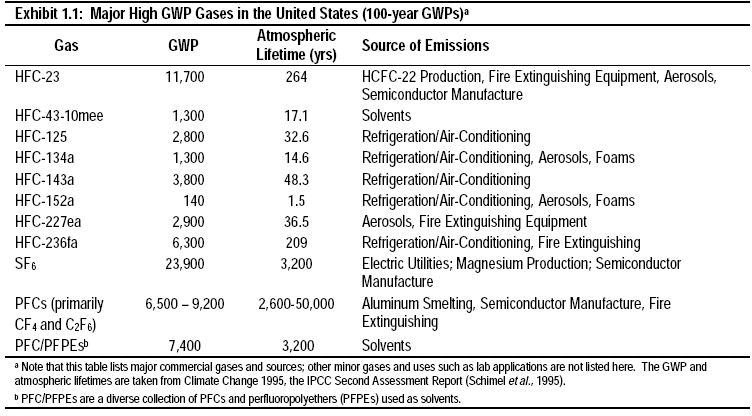
Figure 1 Proportion of different greenhouse gases produced in the United States
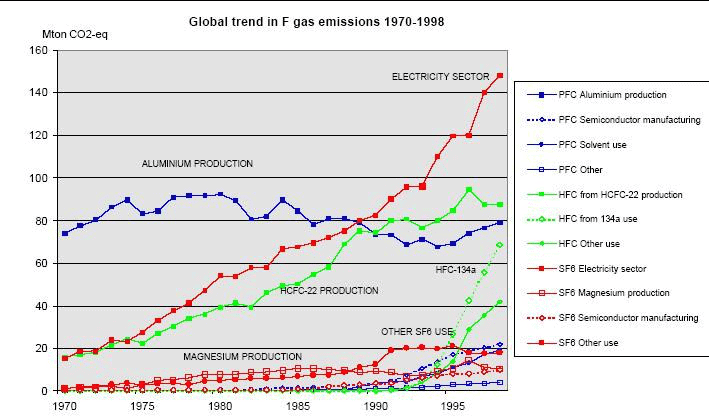
Figure 2 Analysis of global greenhouse gas emission trends in different industries
According to EPA statistics, greenhouse gas emissions from different industries worldwide are on the rise, and SF6 emissions are severe; see Figure 2. Beginning in 2000, U.S. power companies cooperated with the U.S. Environmental Protection Agency to implement the “SF6 Emissions Reduction Partnership for Electric Power Systems” to carry out the recovery and regeneration of SF6 gas and by eliminate SF6 leakage in equipment to reduce the impact of SF6 emissions on the atmosphere. To reduce SF6 emissions and the greenhouse effect, EPA has carried out many emission reduction studies and actively promoted cooperation programs, reducing SF6 emissions in the United States from 15.2% in 1999 to 5.6% in 2006; see Figure 3.
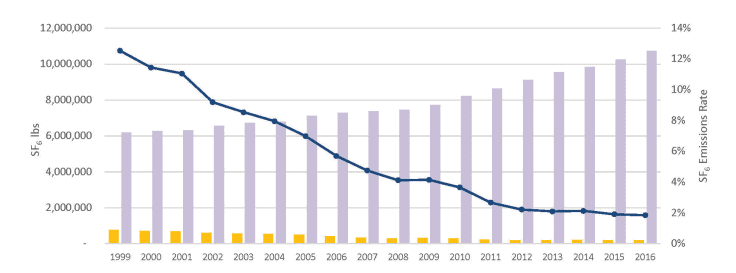
Figure 3 The emission rate of SF6 in the United States from 1999 to 2016
The partnership plan is to achieve the most significant possible reduction of SF6 emissions and equipment leakage through technical cooperation and sharing. The way of cooperation is:
(1) Formulate implementation measures for SF6 gas purification, SF6 recovery and recycling; implementing a recycling system for SF6 gas.
(2) Improve on-site SF6 leakage detection technology and reduce the annual leakage rate of equipment;
(3) Equipment transformation, using SF6 equipment with a smaller gas chamber.
Power companies can significantly reduce the expenditure on SF6 gas through the cooperation plan, which is a typical win-win plan to reduce environmental pollution. There are more than 60 participating power companies, including most large power companies in the United States. Foreign power companies can also participate. Through the cooperation plan, they will conduct annual technical exchanges to study and improve the recovery and processing capacity of SF6. At the same time, major power grid companies formulate corresponding SF6 management procedures to improve the use of SF6, Recycling, regeneration, and other links; for example, the “SF6 Management Procedures of North America Power Grid Corporation” describes in detail the methods and treatment procedures for using SF6 in the power grid.
2.2.2 The SF6 emissions controls plan of European.
All countries in European Community have implemented the recovery plan of SF6, and the UK has formulated the UK-ETS plan for reducing greenhouse gas emissions. This plan is part of the UK government’s climate change control strategy, involving many departments, the first of its kind in the world. The UK-ETS plan initiated the UK trade process of emission reduction. In this plan, the government and enterprises partnered with multiple organizations. The plan includes specific measures and targets for emissions trading, among which emissions indicators for SF6 will be traded in China.
At present, the United Kingdom HCFCs (HFCS), perfluorinated hydrocarbons (PFCS), and SF6 (SF6) account for a relatively low proportion of total greenhouse gas emissions. In 1995, the total emissions of the above three gases were 4.8 million tons of standard carbon, accounting for 2.5% of the total greenhouse gas emissions in the UK. However, the above three gases have a high global greenhouse effect potential and a significant impact on climate change. Shortly, their emissions in specific industries are very likely to increase.
For the increasing use of SF6 in the power industry, it is required to increase the recovery rate of SF6 from 5% to 95% and the equipment leakage rate from 1%/year to 0.1%/year.
According to the requirements of the Kyoto Protocol to reduce the global greenhouse effect, European electric power departments and equipment manufacturers have conducted a study, the primary purpose of which is to compare the environmental impact of the use of SF6 and the use of air as an insulating gas. SF6 manufacturer SOLVAY, SF6 switchgear manufacturer ABB, SIEMENS, and power company RWE participated in this study and compared five aspects of energy, use site, greenhouse gas effect, acid rain, and eutrophication. It is concluded that the use of SF6 helps to reduce the global greenhouse effect. Although SF6 is a gas with a strong greenhouse effect, equipment volume is reduced, and power transmission efficiency is improved to reduce humans’ negative impact on the environment.
2.2.3 Japan’s Plan to Reduce SF6 Emissions
In April 1998, the Federation of Japan Electric Power Companies (FEPC) and the Japan Electric Power Manufacturers Association (JEMA) implemented a free SF6 recovery cooperation program, aiming to reduce the leakage of SF6 gas from power equipment, reduce the emission of SF6, and research to reduce the use of SF6 by working together. The plan’s implementation is supported by power companies and electrical appliance manufacturers, working together to minimize the emission of SF6 gas and reduce the damage to the atmosphere.
The plan mainly includes the following contents:
(1) Reduce maintenance work during the operation of SF6 gas to avoid gas leakage.
(2) SF6 gas recycling system
(3) Unified management of SF6 gas management system.
(4) Apply new technology to develop electrical equipment that minimizes the use of SF6 gas. At the same time, formulate guidelines for SF6 regeneration and recovery of SF6 gas to reduce SF6 gas emissions.
Japan increases the use of SF6 by about 400-500 tons in the power sector each year and about 100-150 tons in other industries. The total SF6 used by 1995 is estimated to be 8,000 tons. The annual production of SF6 is about 1,500 tons, and the power industry emits about 50 tons.
